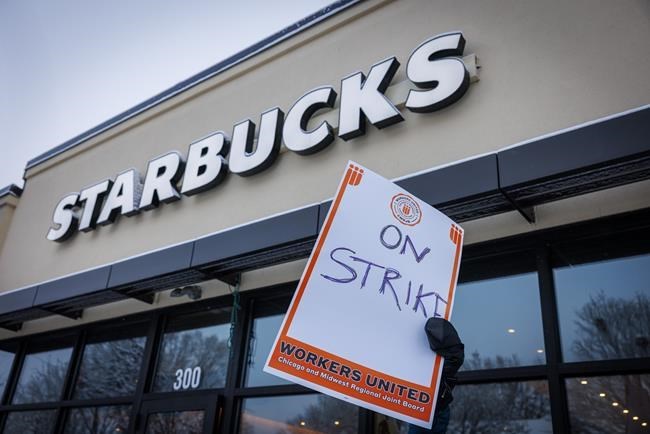With Canada's unemployment rate holding near record lows, experts say an increased interest in unions among retail and service workers that began during the COVID-19 pandemic will continue — even as workers face an uphill battle against large, powerful employers.
The pandemic was a catalyst for many frontline workers, who union organizers say were spurred to fight for better pay and working conditions in sectors where unionization is uncommon.
“When we look at the overall landscape of how things have evolved in the retail and service sector over the last few years, it's been an extremely challenging time for workers,” said Kim Novak, president of United Food and Commercial Workers Local 1518, where a Sephora store unionized last year.
Since 2020, there have been union drives at major retailers including Starbucks, Cineplex, Indigo, Sephora and PetSmart. Just this Friday, workers at an Edmonton Starbucks voted to unionize with the United Steelworkers Union, joining peers in multiple Alberta and British Columbia municipalities.
When there aren't as many would-be workers sitting on the sidelines, companies have fewer hiring choices. That tends to be good for unionization efforts as it puts workers in a better bargaining position, said Nicole Denier, an associate professor of sociology at the University of Alberta who researches work and labour markets in North America.
It makes workers less fearful about being fired for union activity, because they can find another job relatively quickly, said economist and labour expert Jim Stanford in an email.
“And once they form a union and start collective bargaining, a lower unemployment rate gives them a bit more bargaining power,” he said.
But Stanford said the deck is still stacked in favour of employers.
“It would be wishful thinking to imagine that a relatively tight labour market alone will somehow cause a sea change in union organizing trends,” he said.
Union organizers including Novak say they're getting more interest from workers in sectors that for decades have seen low rates of unionization, including retail, food service and warehousing. Scott Lunny, Western Canadian director for the United Steelworkers, said there were more union applications in 2022 than 2021 in B.C.
But the increase in union interest described by organizers is not reflected in Statistics Canada data. Just 12.47 per cent of workers in retail were unionized in February 2023, not much changed from five years earlier. Even fewer workers are unionized in accommodation and food services, at less than six per cent, again almost the same as five years earlier.
Stanford said in an interview that it can take time for new union drives to show up in Statistics Canada numbers because data on unionized workplaces is generally based on collective agreements, which can take a significant amount of time to be cemented after a successful union drive.
This lag also gives companies time to try and weaken union support, said Stanford.
But it's not the only barrier workers are facing, he said.
Currently, the unionized locations of these chain stores are vastly outnumbered by their non-unionized peers. For example, Starbucks had almost 950 company-operated stores open in Canada as of Oct 2, 2022, while Indigo had 173 stores as of April 2, 2022.
Because unionization is normally one physical workplace at a time, employees of chains are at a disadvantage, Lunny said, though some stores have been able to bargain as a unit with others in the same geographical area.
Stanford said one change that would make a big difference would be if workers could bargain in larger groups, similar to how construction workers are unionized by trade and geography instead of by individual workplaces.
Some change has already been underway. For example, in B.C. last year a single-step certification process was introduced that makes it easier and faster for workplaces to unionize, and the B.C. Labour Board in its annual report credits this change with an uptick in certification applications. In February, a fourth Starbucks store in B.C. joined the USW under this new process.
Novak thinks workers have garnered enough momentum to make a change over the longer term.
“This is the slow burn of how workers stand together,” she said. “It starts with these campaigns that don't necessarily show a difference in the national percentages of unionization.”
She said she's confident that as more workplaces unionize and workers across the country watch closely to see what comes of collective agreement, “we will see those percentages start to increase.”
And in the meantime, even a single collective agreement could end up benefiting workers across the country.
That’s what happened with the only unionized Sephora in North America, in Kamloops, B.C., where workers achieved a policy in their collective agreement that the retailer enacted nationwide.
Lunny believes there’s been a shift in how workers view their own value.
“They hear a lot of rhetoric and don't see a lot of action,” he said.
This report by The Canadian Press was first published March 31, 2023.
Rosa Saba, The Canadian Press

